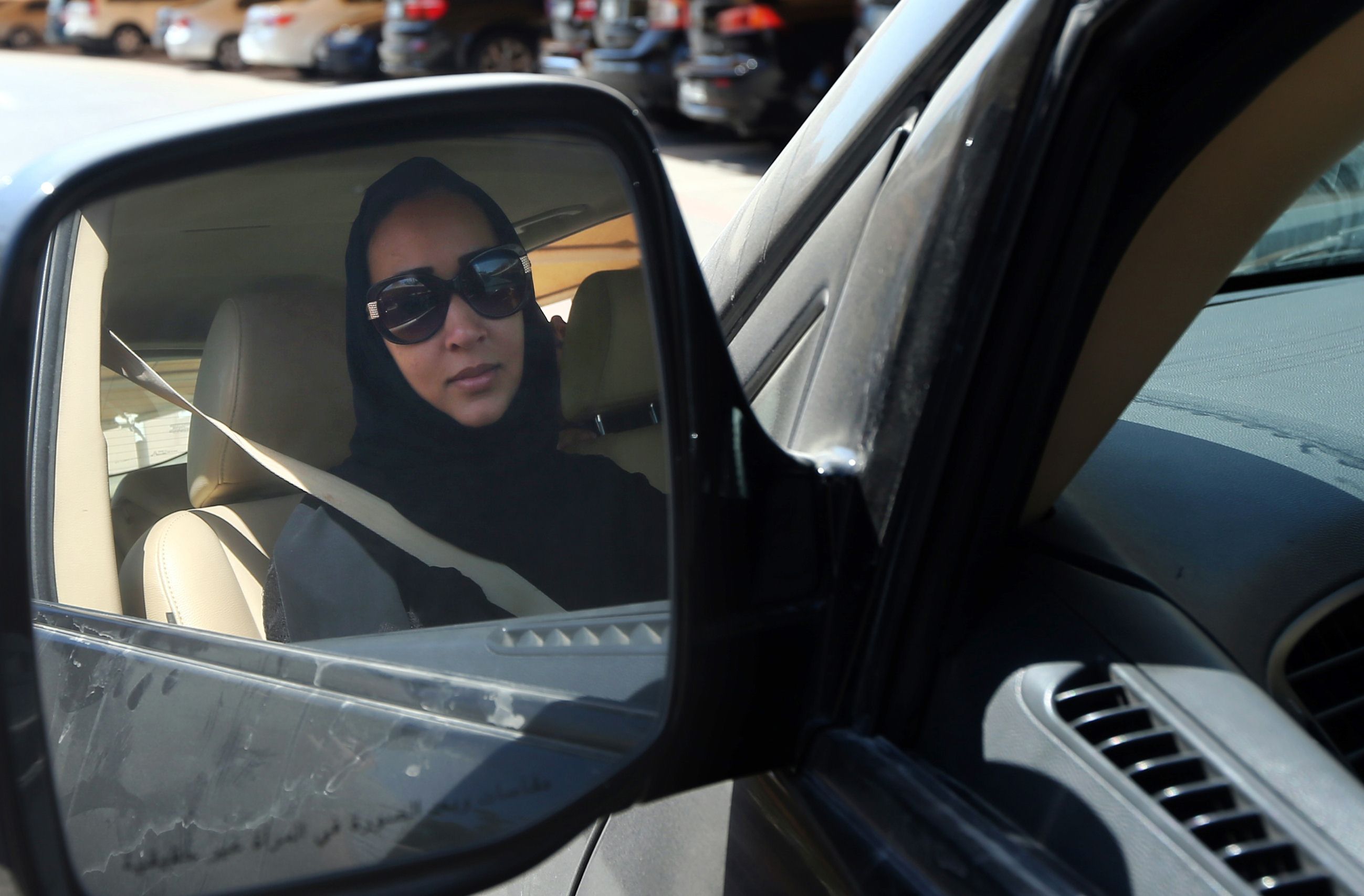Women's rights activists in Saudi Arabia were set to get behind the wheel en masse Saturday to protest their government's refusal to allow women to have driver's licenses — a demonstration that comes just two years after a similar push. While the earlier effort was not successful, it did kick-start some very gradual progress on women's rights, setting the stage for this weekend's demonstration. The story of how Saudi women got from the 2011 driving protest to this one hints at how far they've come and how far they have to go.
Saudi women are subject to some of the most severe legal restrictions in the world, of which the de facto driving ban is perhaps the best known — and it has become the focus of a campaign by Saudi women for broader rights. The campaign has grown dramatically since it began in May 2011 with a single drive. A 32-year-old information technology consultant, Manal al-Sharif, was filmed by women's rights activist Wajeha al-Huwaider driving and reeling off arguments for dropping the ban. The two posted the video to YouTube, and police arrested al-Sharif the next day, charging her with disturbing public order.
Al-Sharif was released after a week, but that video, and her passionate message, had already spread among the country's increasingly well-educated and well-connected women. (A similar campaign in 1990 was limited to just 47 female drivers in one city and fizzled quickly.) Although the driving ban and other restrictions, both formal and informal, can make it difficult for Saudi women to meet and organize, the growing prevalence of social media allowed like-minded women to connect online. A grass-roots campaign organized via a Facebook page called "Women2Drive" urged women to get behind the wheel on June 17, 2011. Dozens did, flooding social-media sites with photos and videos of their law-breaking drives.

















With your current subscription plan you can comment on stories. However, before writing your first comment, please create a display name in the Profile section of your subscriber account page.